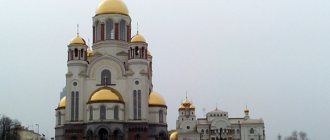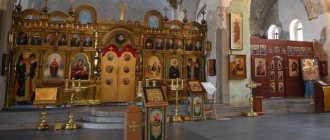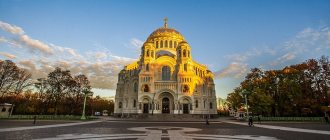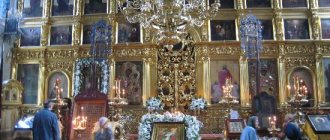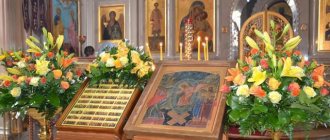Solomon's Temple was called in ancient times one of the 7 wonders of the world. It amazed eyewitnesses with its grandeur and enormous size. In the 10th century BC. Solomon's Temple was built by King Solomon. This was the heyday of the State of Israel, and the Temple itself began to be considered the main shrine of the Jews. While they walked all over the earth, looking for the Promised Land, and fought with their neighbors, while the Jews did not yet have their own state, God wandered with his chosen people. The Ark of the Covenant served as a guarantee of chosenness. However, the Jews eventually decided to settle in Palestine. Then they built King Solomon's Temple, which became a symbol of the unity of Israel, a god-ruled kingdom.
David's contribution to the construction of Solomon's Temple
David bought Mount Moriah from Orna the Jebusite. Here, on the site of the former threshing floor, he erected an altar to the god Yahweh in order to stop the epidemic that struck the people. Mount Moriah is a special place. Abraham, according to the Bible, wanted to sacrifice Isaac, his son, to God here. David decided to build a Temple on this site. However, only his son, Solomon, carried out the plan. David, however, did a lot for its construction: he prepared vessels made of copper, silver and gold, received as a gift or obtained in wars, as well as reserves of metals. Lebanese cedars and cut stones were transported from Phenicia by sea.
Temple Mount
Solomon's Temple was built on Mount Moriah (774 meters high) in the east of the Old City of Jerusalem. The top of the majestic mountain was supposed to be the place where the forefather Abraham brought his only son Isaac (Genesis 22:2). During the time of King David, there was a threshing floor (room for compressed bread) of the local resident Orna. Having bought a plot of land from him, King David built an altar to the Lord there (Second Book of Samuel, 24:18-25). Subsequently, under King Solomon, the son of David, the First Temple was erected here.
“The choice of Orna’s threshing floor for the site of the construction of the Old Testament temple suggests that the sun-baked place of human labor, where he acquires honest bread for himself and his family, has more favor in the eyes of God than the most beautiful places in the world, but not sanctified by the labor of hands human. Every time when the first sheaves collected from the fields were brought here, according to the commandments of Moses, the original image of this mountain and the threshing floor of Orna came to life in the eyes” (nun Mariam Yurchuk).
Construction progress
Solomon began construction in the 4th year of his reign, in 480 after the exodus of the Jews from Egypt, i.e. in 966 BC He turned to Hiram, king of Tire, and he sent artisans, carpenters, and also the architect Hiram Abiff.
The most expensive materials of that time - cypresses and cedars from Lebanon - were used in the construction of such a magnificent building as King Solomon's Temple. Sandstone was also used. It was hewn by stonemasons from Gebal, a Phoenician city. The finished blocks were delivered to the construction site. Copper mined in Edom from Solomon's copper mines was used for utensils and temple columns. Also, the construction of Solomon's Temple took place using gold and silver. About 30 thousand Israelis worked on its construction, as well as about 150 thousand Phoenicians and Canaanites. 3.3 thousand supervisors, specially appointed for this important task, supervised the work.
Reality
The Temple Institute, an organization specially created for this “project” in 1987, is dealing with issues of future construction. The Institute's employees are developing the design of the Temple. In addition, at the moment, experts have already restored more than 60 sacred relics, including the breastplate and crown of the priest, the musical instrument shofar, a vessel for ablutions and much more. The restoration of some of the main objects of worship has also been completed: the menorah, the golden table of showbread and the infamous Ark of the Covenant.
In theory, it would be possible to begin construction of the Temple right now, if not for one “but”: in the place where the Israelis want to build the Temple, there is already the Dome of the Rock - an Islamic sanctuary located next to the oldest mosque on the planet, Al-Aqsa. So either the builders will have to negotiate with the Muslims, or, what is even more interesting, look for a new place for construction.
Description of Solomon's Temple
The Jerusalem Temple of Solomon amazed with its splendor, wealth and grandeur. They built it according to the model of the Tabernacle of Moses. Only the dimensions were increased, and the devices necessary for worship were also used. The structure consisted of 3 parts: the porch, the sanctuary and the Holy of Holies. A large courtyard intended for the people surrounded it. The tabernacle contained a laver intended for ritual washing. A whole system of vessels existed at the altar of this temple: 10 washstands on stands, artistically made, as well as a large pool, called the Copper Sea because of its size. The corridor, 20 cubits long and 10 cubits wide, was a vestibule. Two copper columns stood in front of him.
The Sanctuary and the Holy of Holies were separated from each other by a stone wall. It had a door made of olive wood. The walls of the Temple were made of massive hewn stone. They were lined with white marble on the outside, and gold leaf and wood on the inside. Gold also covered the ceiling and doors, and the floor was made of cypress, so no stone was visible inside the Temple. Ornaments in the form of various plants (colocynths, palm trees, flowers), as well as images of cherubs decorated the walls. In ancient times, the palm tree was considered the tree of paradise. She was a symbol of greatness, beauty, and moral perfection. This tree in the Temple became a symbol of the triumph of God in the Jewish land.
Although the First Temple of Jerusalem was built by King Solomon, preparations for its construction had begun in the previous reign. King David purchased a site for the temple, made extensive preparations for building materials, drew up a plan for the temple, and saved up funds.
Solomon's Temple
Jerusalem at that time was much smaller than today; of its four hills, only one was inhabited - Mount Zion. After occupying the city, David surrounded it with a wall. The rather high Mount Moriah adjoined Zion on the eastern side. It was occupied by the field of one local resident, the Jebusite Orna. In the middle of the field, on the upper ridge of the mountain, a threshing floor was built. King David bought this mountain from Orna for 50 shekels of silver (according to other sources, for 600 shekels of gold). It is quite possible that the mountain was bought in parts: first, a small part of it for 50 shekels of silver, and then other areas adjacent to it - for only 600 shekels of gold.
After purchasing the site, David immediately dedicated it by building an altar. According to legend, this was the very place where Abraham prepared to sacrifice his son Isaac. The building materials prepared by King David for the temple are gold, silver (although it is not mentioned in the decoration of Solomon's Temple), copper, precious stones, iron, cedar beams, marble, stone. The Jerusalem Temple was the only one for the entire kingdom of Israel and therefore required all kinds of splendor. David fulfilled the plan of the Temple in general and in particular, which he handed over to his heirs in a solemn will and with an insistent demand that it be fulfilled.
Despite the abundance of building material prepared by David, it was not enough even to begin work; there were especially few stones and timber. Therefore, King Solomon, starting the construction of the Temple, entered into an agreement with the Tyrian king Hiram, according to which he obliged: to supply Solomon with cedar and cypress wood, hewn ready-made stones from the Lebanese mountains; the cutting down of timber and the processing of stones should be left to the people sent by Solomon, but Phoenician craftsmen should also be placed over them for guidance, as they are more experienced in the matter; wooden beams were delivered from Lebanon by sea on rafts to Jaffa, the pier closest to Jerusalem. For his part, Solomon had to supply wheat, wine, and oil to Tire. There is evidence that King Solomon concluded a similar agreement with the Egyptian king. At the construction site of the Temple, no ax, no hammer, or other iron tool was heard: wood and stone finishing work was carried out in Lebanon, foundry work was performed in the Jordan Valley.
Before starting to build the Temple, it was necessary to find a place for it that would correspond to the plan. In its original form, the ridge of Mount Moriah was very steep; the body of the temple and the altar could barely fit on it. There was no room at all for the courtyards that were supposed to surround the Temple on all sides. In addition, in its original direction, the mountain ridge ran diagonally - not directly from north to south, but from northwest to southeast. And the Temple and its courts had to be clearly oriented (like the tabernacle) in the correct relationship to the four cardinal directions. Therefore, in preparation for the construction of the Temple, it was necessary: a) to expand the upper part of the mountain to the dimensions provided for by the plan of the Temple; b) change or align the direction of the ridge so that the area prepared for the Temple is as accurately as possible facing the four cardinal directions. And King Solomon came up with a wise plan: to build along the eastern side of the mountain, starting from its base, among the Kidron Valley passing here, a large and solid stone wall in the direction that the wall of the Temple courtyard should have had (that is, straight from north to south), and fill the gap between the wall and the mountainside with earth. In general, Solomon's Temple was built according to the plan given for the tabernacle of Moses, only on a larger scale and with such adaptations as were necessary in a rich, immovable sanctuary. The temple was divided into the Holy of Holies, the sanctuary and the vestibule, but it was larger and more magnificent than the tabernacle.
Around the inner compartment of Solomon's Temple, a large square was built - offices for the people (or a large courtyard). The second courtyard, or courtyard of the priests, was twice the size of the tabernacle. Corresponding to the laver of the tabernacle, there was a whole system of washing vessels at the altar of the Temple: 10 artistically made lavers on stands and a large pool for water, called the sea in size. The vestibule of the temple was a corridor 20 cubits long (according to the width of the Temple body) and 10 cubits deep. In front of him stood two large copper columns. The Holy of Holies and the sanctuary were separated by a stone wall with an olive door. The walls of the Temple itself were lined with massive cut stone, lined with white marble on the outside, but, like the doors of the tabernacle, inside they were covered with wooden lining, and then lined with sheet gold. The doors, the ceiling, and the cypress floor of the Temple were covered with gold. On the walls of the tabernacle were depicted the same cherubim as on the embroidered cloth that draped its interior walls. And on the walls of Solomon’s Temple cherubs were depicted, only an ornament in the form of plants was added. Externally, the appearance of the Temple amazed with its grandeur, massiveness and strength, and inside - with wealth and splendor, unheard of even in the ancient world. The entire interior of the Temple was lined with wood - the walls and ceiling were cedar, and the floor was cypress, so that the stone inside the Temple was not visible. The wall boards were decorated with carvings of reliefs cut inward (rather than protruding forward); the deeply carved main subjects of the paintings never protruded above the plane of the wall. The paintings again depicted figures of cherubs, but they were also supplemented by images of palm trees, coloquintes (a genus of wild cucumbers) and blossoming flowers. The choice of palm tree is explained not only by the fact that it was the most beautiful and useful tree - a symbol of beauty, greatness and moral perfection. According to the ancients, the birthplace of the palm tree was Palestine, from where it spread throughout the ancient East. The palm tree in the Jerusalem Temple was a symbol of the triumph of God in the Promised Land. There were no images of palm trees in the tabernacle, since it was a desert sanctuary, built only on the way to Palestine. The wooden planks that covered the stone walls (bars in the windows, the ceiling, the floor, the steps leading to the Holy of Holies) were in turn covered with gold leaf. Each nail with which the gold sheets were nailed was also gold. Along the gold there were also multi-colored precious stones for decoration. In its external forms, the Temple resembled a ship expanding towards the top, or Noah's Ark. The internal platforms, rising one above the other, extended outward from the lower main part of the wall in three projections. These projections required special supports, which were three rows of columns with a fourth row of cedar pilasters. Thus, along the three walls of the Temple (northern, southern and western) colonnades (or covered alleys) were formed under wide canopies protruding from the upper parts of the wall. When the Temple was ready, King Solomon called all the elders and many people to consecrate it. With the sound of trumpets and the singing of spiritual songs, the Ark of the Covenant was brought in and placed in the Holy of Holies under the shadow of two new colossal cherubim, stretching out their wings so that the ends of the outer wings touched the wall, and the inner wings bent over the Ark. The glory of the Lord in the form of a cloud filled the Temple, so that the priests could not continue their worship. Then Solomon ascended to his royal seat, fell to his knees and began to pray to God that in this place He would accept the prayers of not only the Israelis, but also the pagans. At the end of this prayer, fire came down from heaven and burned the sacrifices prepared in the Temple. The Babylonian king Nebuchadnezzar captured Jerusalem, plundered it, burned it and destroyed Solomon's Temple to the ground. Then the Ark of the Covenant also perished. The entire Jewish people were taken into captivity (589 BC), only the poorest Jews were left on their land to cultivate the vineyards and fields. In destroyed Jerusalem, the prophet Jeremiah remained, who wept on the ruins of the city and continued to teach goodness to the remaining inhabitants. The Jews were in Babylonian captivity for 70 years. The Persian king Cyrus, in the first year of his rule over Babylon, allowed the Jews to return to their fatherland. Such prolonged captivity led them to the realization that only Jerusalem and the entire kingdom of Judah could stand as the Temple of Jehovah. This conviction was so strong in them that they left Babylon as soon as they secured royal permission to rebuild the Temple in Jerusalem. Forty-two thousand Jews went to their land. Those who remained in Babylon helped them with gold, silver and other property and, in addition, rich donations for the Temple. The king gave the Jews the sacred vessels that were taken by Nebuchadnezzar from the Temple of Solomon. Returning to Jerusalem, the Jews first rebuilt the altar to the Lord, and the next year laid the foundation of the Temple. Nineteen years later, the construction of the Temple was completed. The New Temple was not as rich and magnificent as Solomon's Temple, and the elders, who remembered the splendor of the former Temple, cried that the Second Temple was poorer and smaller than the previous one. But during the reign of Herod (37-4 BC), who made a lot of efforts to expand and decorate it, the Temple reached a special prosperity and splendor. Josephus Flavius left the following description of the Temple: “The Temple shone so brightly, reflecting the rays of the sun, that no one could look at it. And from a distance it looked like a mountain peak sparkling with snow. The terraces of the Temple consisted of huge granite blocks up to 20 meters long. These stone blocks were carefully fitted to each other so that even an earthquake would not move them. In some places they rose as a solid wall up to 150 m in height. The wall ended in a double colonnade that surrounded the Temple Court for non-Jews. Stairs rose from it to nine golden and silver gates. They led into courtyards for Jewish women and men. Above them was the Courtyard for the priests, and the 50-meter facade of the Temple itself rose even higher. All the buildings were decorated with white marble and gold, and even the spikes on the roof of the Temple, made specifically to prevent pigeons from landing on it, were golden.” During the Jewish War, the Jerusalem Temple was destroyed for the second time in 70 AD, and the destruction of the Second Temple occurred on the “ninth Ab” according to the Jewish calendar, on the day of the destruction of the First Temple - more than 500 years later.
Today, only the preserved part of the western wall that surrounded the Temple Mount Moriah, on the top of which stood the Jerusalem Temple, reminds us of the majestic structure that was the center of the spiritual life of the Jewish people. This part of the wall, made of huge stone monoliths, is 156 meters long. It is called the Western Wall (or Western Wall) and is the national shrine of the Jewish people.
Temple Mount in Jerusalem
The remains of megalithic structures were discovered during archaeological work under the Temple Mount in Jerusalem at the end of the 20th century. They form the southern part of the cleared fragment of the foundation of the western supporting wall of the Temple of Solomon, built in 480 after the beginning of the Exodus of the Jews from Egypt. The rows of its masonry, hidden underground several thousand years ago, can be seen in the Kotel tunnel, opened in 1996, stretching approximately 500 m from the Wilson Arch to Via Dolo Rosa. Here, at the level of the ancient street, four massive stone blocks are exposed. Three of them are 14, 13.5 and 8.5 m long and weigh 600, 570 and 355 tons. Moreover, as in Baalbek, they lie on slightly smaller blocks. All these blocks were brought to the construction site from a quarry located west of Jerusalem. CHRISTIANITY Christian shrines Church of the Holy Sepulcher
Copyright © 2021 Unconditional love
Consecration of the Temple
The construction of the Temple lasted seven years (957-950 BC). In the 8th month of the 11th year of Solomon's reign the work was completed. On the Feast of Tabernacles the consecration took place. Accompanied by Levites, priests and crowds of people, the Ark of the Covenant was solemnly carried inside to the Holy of Holies. Entering the Temple of Solomon (a photo of its model is presented below), the king who led the construction fell to his knees and began to pray. After this prayer, fire came down from heaven and burned the prepared sacrifices.
The celebration of the consecration of the main temple continued for 14 days. This event was celebrated by all of Israel. There was not a single person in the country who did not visit Solomon’s Temple in Jerusalem at that time and did not sacrifice at least one sheep or ox.
Old Testament Tabernacle
Until the Jews ended the war for the Promised Land, the Lord did not want to “dwell in the house.” He did not give the command to build a permanent temple. Therefore, the prophet Moses received instructions to build the Tabernacle of the Covenant - a portable sanctuary (Book of Exodus, 25-31). In this camp temple, behind a curtain, there was the Holy of Holies, where the Ark of the Covenant with the Tablets was placed. The Tabernacle itself was assembled from beams and fabric and was like a large tent.
During the reign of King David, a new Tabernacle was built and placed in a permanent location in Jerusalem. The Lord did not bless the king to build a stone temple. According to the Will of God, it was not David, but his heir, who had to build the Temple. This was due to the fact that David fought a lot and shed a lot of blood (1 Chronicles 22:8).
Worship in the Holy of Holies
King Solomon built the Temple not only for Jews. He wanted all the peoples of the world to come to the One God. And the Temple is the place where he lives. We can observe today how hundreds of thousands of people from all over the globe come to the Western Wall every day. This is the place where the famous Temple once stood. However, even priests were strictly forbidden to approach the Holy of Holies. A terrible punishment awaited the violators - death. Only on the Day of Judgment, that is, once a year, did the high priest - the main priest of the temple - enter here in order to pray for the forgiveness of the sins of the entire people of Israel.
This priest had a special cape over his long linen robe - the ephod. It was woven from 2 panels and gold threads woven into fine linen. On top was also a breastplate with 12 stones, representing the 12 tribes of Israel. A crown with the name of God (“Yahweh” in the Russian Bible) adorned the head of the high priest. On the inside of his breastplate there was a pocket with a gold plate on which was written the name of God consisting of 70 letters. It was by this name that the priest addressed the Almighty during prayer. According to legend, a rope was tied to the minister. One end of it remained outside in case something bad happened during prayer and his body remained in the room, which no one had the right to enter except him.
The synagogue does not have an altar, but there is a cabinet and a table for the Torah
The only indispensable attributes of any synagogue are a place to store the Torah and a table on which the scroll can be unrolled for reading. All other details of synagogue architecture vary greatly from country to country. Since the majority of Russian Jews (with the exception of Bukharan, Georgian and Mountain Jews) are Ashkenazi, that is, immigrants from Germany, below we will look at the organization of Ashkenazi synagogues.
According to Jewish religious laws, the person praying must face the direction of Jerusalem. Therefore, Ashkenazi synagogues are oriented to the east or southeast, and the place for storing Torah scrolls, the aron ha-kodesh, is usually located near the eastern wall. The tradition of oriented synagogues to the east was largely preserved even with the spread of Ashkenazi communities to Eastern Europe and Asia, in relation to which Jerusalem is located to the south or southwest. For example, the Choral Synagogue in St. Petersburg and the synagogues in Tomsk and Irkutsk are oriented to the east. At the same time, the Choral Synagogue in Moscow is oriented to the southwest, and the synagogue in Vladivostok is oriented to the west, in accordance with the real location of Jerusalem.
1 / 6
Aron ha-kodesh and amud in the synagogue of the city of Piatra Neamt. Romania, 1904 © Center for Jewish Art / Zev Radovan
2 / 6
Aron Hakodesh in the Great Synagogue in Satanov. Ukraine, 1721 © Center for Jewish Art / Vladimir Levin
3 / 6
Aron HaKodesh in the Choral Synagogue in Vilnius. 1903 Wikimedia Commons
4 / 6
Aron HaKodesh in the Birobidzhan synagogue. 1957 © Center for Jewish Art / Vladimir Levin
5 / 6
Aron ha-kodesh. Germany, 18th century © The Jewish Museum, New York
6 / 6
Aron HaKodesh in the Spanish Synagogue in Prague Wikimedia Commons
Next to the aron ha-kodesh there is an amud - a special music stand on which the person leading the prayer places a prayer book. Such a person is called a “representative of the community” (shaliach zibur, or shatz for short), and he can be any of the worshipers. When a congregation hires a professional with a musical background to conduct worship, he is usually called a cantor (khazan in Hebrew).
1 / 4
Amud in the synagogue in Miskolc. Hungary, 1863 © Center for Jewish Art / Ekaterina Oleshkevich
2 / 4
Amud in the Small Synagogue in St. Petersburg. 19th century © Center for Jewish Art / Zev Radovan
3 / 4
Amud in the beit midrash of Rebbe Levi in Roman. Romania, circa 1900 © Zusi Efron Archive / Center for Jewish Art
4 / 4
Amud in the Old Synagogue in Krakow. Poland, 18th century © Center for Jewish Art / Boris Khaimovich
The table at which the Torah is read usually stands on a platform called the bimah (literally “raise”). In the Ashkenazi tradition, the bimah is usually placed in the center of the prayer hall, while, for example, in Italy it is located near the wall opposite the aron ha-kodesh.
1 / 3
Bima in the synagogue in Ansbach. Germany, 1746 © Center for Jewish Art / Vladimir Levin
2 / 3
Bima in the synagogue in Lancut. Poland, 1761 © Vladimir Levin
3 / 3
Bima in the synagogue in Alba Iulia. Romania, 1840 © Center for Jewish Art / Vladimir Levin
Most of the time, worshipers sit or stand facing the aron hakodesh, but when the Torah scrolls are taken out of it and transferred to the bimah, all attention turns to it. In this way, a synagogue also differs from a church, in which all sacred rites take place in one place: at the altar (for Catholics) or in the altar part of the church (for Orthodoxy). Such bipolarity does not contribute to maintaining silence, which is why in almost all synagogues in the world you can see signs with the inscription “It is forbidden to talk during prayer and reading the Torah.”
Great Choral Synagogue of St. Petersburg © Alexander Demyanchuk / TASS
In the 19th century in Germany, and later in other European countries, reformed synagogues began to appear, which borrowed external forms of worship from Christian churches: choral singing accompanied by an organ, a weekly sermon by a rabbi, a cantor with secular musical education and prohibitions for worshipers to read prayers in full voice. In the Russian Empire, such synagogues were called choral. To make the service more orderly, the bimah in Reform synagogues began to be placed not in the center of the hall, but directly in front of the aron ha-kodesh.
Thus, the organization of space in a Reform synagogue became similar to the organization of space in a Catholic or Protestant church, with one focal point in the form of the aron hakodesh, in front of which there is both a table for reading the Torah and a place for the cantor and preacher. In post-Soviet times, choral synagogues passed into the hands of Orthodox communities, and the bimah in many of them was moved to the center of the hall.
How did God answer the Jews?
According to the Talmud, the high priest “read” the Lord’s answers from the 12 stones on his breastplate. These were usually the answers to the most important questions for the people and the king of Israel. For example, will this year be fruitful, is it worth going to war, etc. Usually the king asked them, and the high priest looked at the stones for a long time. The letters engraved on them lit up in turn, and the priest added up answers to questions from them.
Destruction and restoration of the Temple
Solomon's Temple, grandiose and majestic, stood for only about three and a half centuries. Nebuchadnezzar, king of Babylon, in 589 BC. captured Jerusalem. He plundered the city, destroyed and burned the Temple. The Ark of the Covenant was lost, and nothing is known about it to this day. The Jewish people were taken into captivity, which lasted for 70 years. Cyrus, the Persian king, allowed the Jews to return to their native country in the first year of his reign. And they set about rebuilding Solomon's Temple. Silver, gold and other property were collected by those remaining in Babylon. They sent all this with the repatriates to their homeland and then continued to send rich donations to Solomon's Temple in Jerusalem. Its restoration took place not without the participation of King Cyrus, who made his contribution by returning the sacred vessels to the Jews, taken from the First Temple by Nebuchadnezzar.
CRASH OF THE SYMBOL OF NATIONAL INDEPENDENCE
The Jerusalem temples were destroyed, but for many centuries they remain in the memory of Jews not only as a symbol of faith, but also as a symbol of independence.
Half a century later, by decree of Cyrus the Great, the Jews were allowed to return to Jerusalem after the Babylonian captivity (598-539 BC) and rebuild their temple. But he couldn't compare with the first one. It was not this “intermediate” temple of Zerubbabel, but the temple of Herod the Great that went down in history as the Second Temple of Jerusalem. After reconstruction by King Herod, the temple complex became a huge structure on a platform (partially preserved) of white marble slabs measuring 14 hectares. To accommodate this platform, Herod expanded the top of the Temple Mount, building artificial terraces along the edges. The southern edge of the platform, reinforced with giant slabs of white marble, rose vertically above the ground to almost 40 meters. The entire structure was twice the size of the famous Trajan Forum in Rome. By restoring the temple, Herod, unloved by the people, wanted to improve his reputation. Work began around the middle of his reign in 19 or 22 and continued for a very long time. According to the Gospels, when Jesus preached in the temple, construction had already been going on for 46 years. And in fact, already 6 years after the completion of large-scale construction work in 64, the Second Temple was destroyed by the Romans during the suppression of the anti-Roman uprising (First Jewish War of 63-70). The destruction of Jerusalem and the burning of the temple marked the beginning of the dispersion of Jews throughout the world.
Herod's Temple from the times when Jesus Christ preached here (reconstruction of the late 19th century).
The city lay in ruins and desolation for a long time, until in 130 Emperor Hadrian ordered the construction of a Roman colony, Aelia Capitolina, on the ruins of Jerusalem, modeled on a Roman military camp. On the site of the temple, Hadrian ordered the erection of a sanctuary dedicated to Jupiter, and where the Holy of Holies was, an equestrian statue of Hadrian was erected. The Jews could not stand such sacrilege, and a fierce and protracted war broke out - a new Jewish uprising against Rome (Bar Kokhba's Revolt or the Second Jewish War, 132-136). The rebels held the city for almost three years. They built a Tabernacle - a temporary temple, and resumed sacrifices to the One God. After the suppression of the uprising, the Tabernacle was again destroyed, and all Jews were expelled from the city by order of Hadrian.
Plan of Herod's Temple.
It is known that the Byzantine emperor Julian the Apostate (361-363), having reigned in Constantinople, began to pursue a policy of religious tolerance, announced freedom of worship in the territory under his control and the return of confiscated property of pagan temples. Among other things, Julian unveiled his plan to rebuild the Jewish Temple in Jerusalem. However, a month later, Julian died a little, and the temple was not restored. Nevertheless, this topic is not closed: according to Jewish tradition, the Jerusalem Temple will one day be restored and become the main religious center of the Jews and the whole world.
Meaning of the Temple
The Jews had felt the presence of God before, when he walked in a pillar of fire through the desert ahead of the people, when Moses came down from Mount Sinai and his face shone like the sun. However, the Temple became a special place for the people, symbolizing the presence of God. At least once a year every pious Jew had to come here. From all over Judea and Israel, and from all over the world where Jews lived in dispersion, people gathered at the Temple on major holidays. This is stated in chapter 2 of the Acts of the Apostles.
Of course, the Jews, unlike the pagans, did not believe that God lived in man-made temples. However, they believed that it was at this place that his meeting with the man took place. The pagans also knew about this. After all, Pompey, who was sent during the Jewish War to command the Roman cohorts that pacified Jerusalem, it was no coincidence that he sought to get into the Holy of Holies of this temple in order to understand what or who the Jews worshiped. How great was his surprise when, pulling back the curtain, he discovered that there was nothing there. No statue, no image, nothing! It is impossible to enclose the God of Israel in a statue; it is impossible to depict him. Jews once believed that the Shekinah resided between the wings of the Cherubim guarding the Ark of the Covenant. Now this Temple began to serve as a meeting place between man and God.
On the eve of the Apocalypse
In the end, I would like to recall how in 2021, on Google maps, instead of the Al-Aqsa Mosque, the Third Temple appeared, in which, as many claimed, the Antichrist should be crowned. This temple was “built” only in virtuality, but as many argue, its real embodiment is being prepared over time.
Today you will not see these projections on Google maps because... After people made a fuss about this temple, Google removed these projections. But who needs it and why remains an open question. Perhaps just a joke from a person who replaced the GPS coordinates on his phone and was able to place a picture in this place? Or is it really preparation for the inevitability of the end of the world?
Let's discuss this issue in the comments? Tell me what you think about this?
Destruction of the Second Temple, Western Wall
Jerusalem Temple in 70 AD. Roman troops wiped it off the face of the earth. Thus, more than 500 years after the destruction of the First Temple, the Second was destroyed. Today, only part of the western wall that surrounded Mount Moriah, where Solomon’s Temple stood in Jerusalem, reminds us of the great shrine. Now it is called the Wailing Wall. This is the national shrine of the people of Israel. However, not only Jews come to pray here. It is believed that if you stand facing the wall and close your eyes, you can hear thousands of musicians and singers praising God, the shofar blowing, and the glory of the Lord descending from heaven onto those praying. Who knows, perhaps the Third Temple of Solomon will someday be built on this sacred site...
INTERESTING FACTS
Immediately after the death of Solomon, the Kingdom of Israel split into the Southern and Northern Kingdoms of Judah.
When Solomon officially asked King Hiram of Tire to help in the construction of a new temple with workers and materials, he replied: “So I am sending you a smart man who has knowledge, Hiram my master mason, the son of one of the daughters of Dan, and his father is a Tyrian, who can make things from gold and from silver, from copper, from iron, from stones and from wood, from yarn of purple, yellow, and fine linen, and from scarlet, and to cut out all kinds of carvings, and to do everything that will be entrusted to him along with with your artists and with the artists of my lord David your father.”
During the reconstruction work carried out by King Herod, a thousand priests were trained in construction skills so that they could carry out all the necessary work in the interior of the temple, where only priests were allowed to enter. Construction was carried out in careful compliance with all the requirements of Gapakha. The necessary measures were taken to ensure that regular services in the temple did not stop during the work.
The name Wailing Wall, or Wall of Wailing, was not invented by Jews (for them it is simply the Western Wall), but by Arabs who watched Jewish pilgrims moaning about the lost temple.
Tradition of building Christian churches
It is known that the apostles and Christ visited the Jerusalem Temple. After its destruction and the resettlement of Christians throughout the earth, they could not build other temples for almost 300 years. People performed divine services in the catacombs, in their homes, at the graves of martyrs due to the cruel persecution of Rome. Constantine of Milan, Emperor, in 313, granted religious freedom to the Roman Empire by his edict. So Christians finally got the opportunity to build churches. All over the world, from the 4th century to the present day, Christian shrines of all kinds of styles and forms are being built, but they go back, one way or another, precisely to the Temple of Jerusalem. They have the same three-part division - an altar, a naos and a vestibule, repeating the main features of the Ark of the Covenant. However, the Eucharist now serves as the place of God's presence.
Building styles changed over time, each nation built temples in accordance with their own ideas of greatness and beauty, in the spirit of asceticism and simplicity or, conversely, wealth and luxury. However, painting, architecture, sculpture, music in all of them serve one purpose - the meeting of God and man.
Also, the temple often acted as an image of the Universe in its transformed state. However, theologians and the Universe are often compared to a temple. The Lord Himself in the Bible is called the Artist and Architect, who created this world according to the laws of harmony and beauty. At the same time, the Apostle Paul calls man a temple. Creation, thus, acts as if it were a nesting doll: God creates the entire Universe as a temple, man builds a temple inside it and enters it, himself being a temple of the spirit. One day these 3 temples must unite, and then God will be in everything.
In an Orthodox synagogue, women pray separately from men
1 / 2
Women in the synagogue. Engraving by Jean Baptiste Pierre Michels. 19th century Rijksmuseum
2 / 2
In the synagogue. New York, 1871 © Kean Collection / Archive Photos / Getty Images
Another important difference between a synagogue and a church is the division of worshipers by gender. During prayer, men should not see women, so as not to be distracted from serving the Almighty. In medieval Ashkenazi synagogues, the women's section was usually located in annexes connected to the prayer hall through small windows. Since the 18th century, women's galleries inside the hall have appeared in Central Europe. In strictly Orthodox synagogues, the women's galleries have special bars or curtains called mechitza, which prevent men praying from seeing women, while in choral synagogues there are no such bars or curtains. However, in Reform synagogues in America, women have sat in the prayer hall next to men since the 19th century.
Opening of the Brazilian Temple of Solomon
A year ago, in 2014, the Temple of Solomon in Brazil was opened, the largest among all neo-Protestant temples in this country. The height of the structure is about 50 meters. Its area is equivalent to the area of five football fields. Stones were brought from Hebron to build the walls. The evening lighting, which costs around 7 million euros, imitates the evening atmosphere of Jerusalem itself. What is happening inside the temple is demonstrated by 2 huge screens located to the left and right of the altar. The building itself is designed for 10 thousand people.
